Cyril Print's 4mm stock
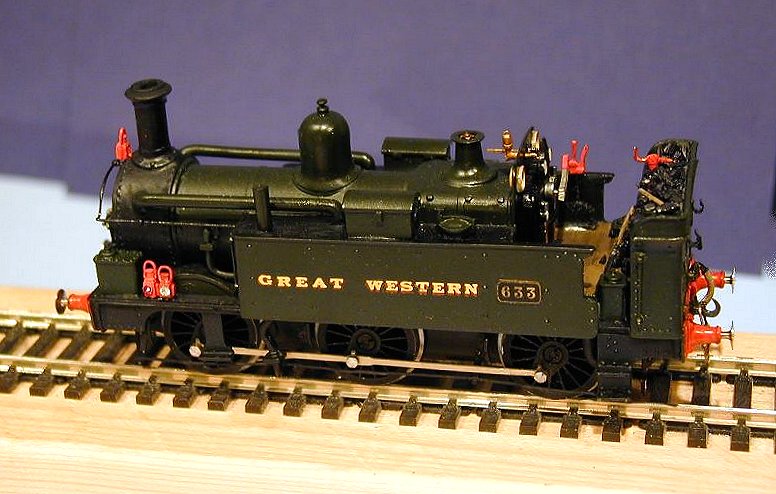
633 Class 0-6-0 No. 633 in 1922 livery, built from an M&L whitemetal kit to OO Gauge (later marketed by Alan Gibson)
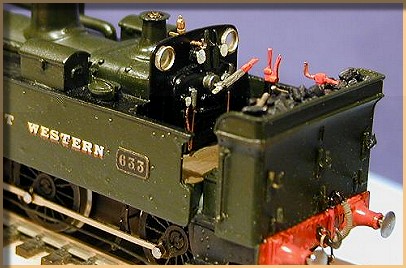 |
A closer look at the open cab of No. 633. |
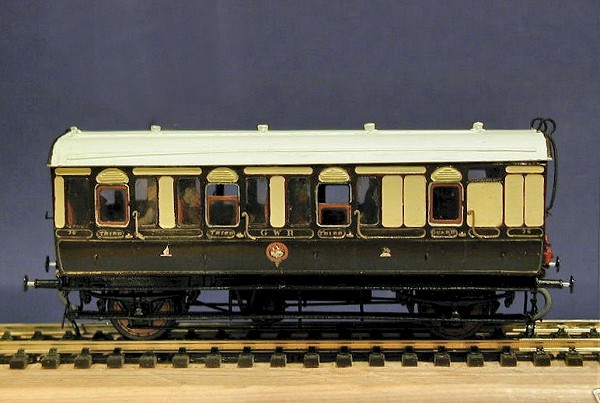 |
One of the 4-wheel Holden "Metro" coaches, originally built for metropolitan work. This is a Brake Third to Diagram T7, built from a Roxey etched brass kit to OO gauge. Screw link couplings and ABS buffers. |
 |
Another "Metro" from the Roxey range, an All 1st Diagram R5. It is fully detailed both inside with seats and passengers, as well as outside. The coach has a compensated chassis with Alan Gibson Mansell wheel sets, screw link couplings and sprung buffers. The 1922 livery was done with Phoenix paints and HMRS transfers. |
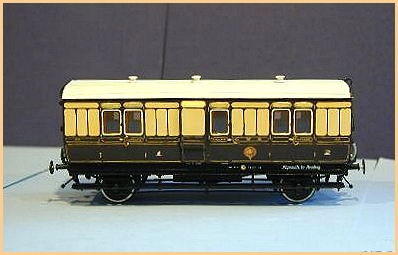 |
4-wheel PBV to diagram V5, built from a Colin Waite etched brass kit. Compensated chassis, and fitted with Jackson screw-link couplings and correct profile white metal buffers. |
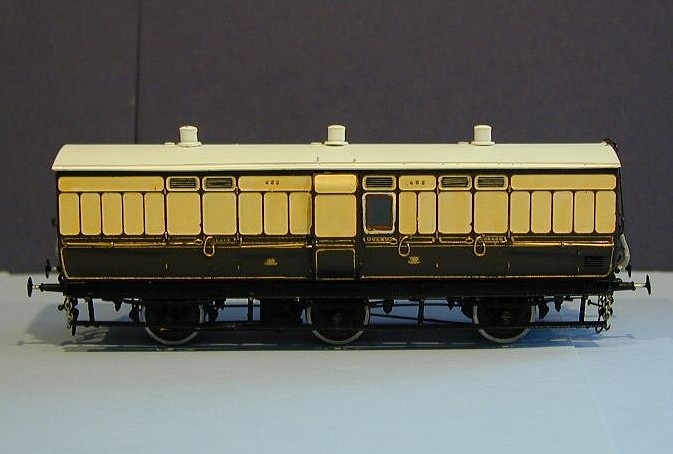 |
Another PBV, but this one is 6-wheeled Diagram V13. It was built from a Colin Waite etched brass kit purchased a good few years ago. The 6-wheel arrangement, designed by Colin Waite, is modelled with four wheels on a truck to negotiate curves (although not less than a 3' radius). The van is fitted with Jackson screw link couplings and correct profile white metal buffers which are true to prototype. Chains are also fitted as was common practise for that period in the Great Western history. The 1900 livery is with Phoenix paints and HMRS transfers. |
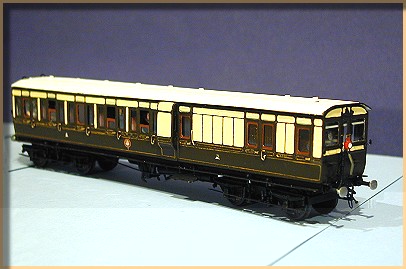 |
Here is a Clifton Down Auto set. The Brake 3rd Driving coach seen above is the Roxey Mouldings etched brass kit, while the Composite coach seen below forms the other half of the set. This was made up from three kit-bashed Ratio 4-wheel coach kits, with a scratch built under frame using Blacksmith bogies. |
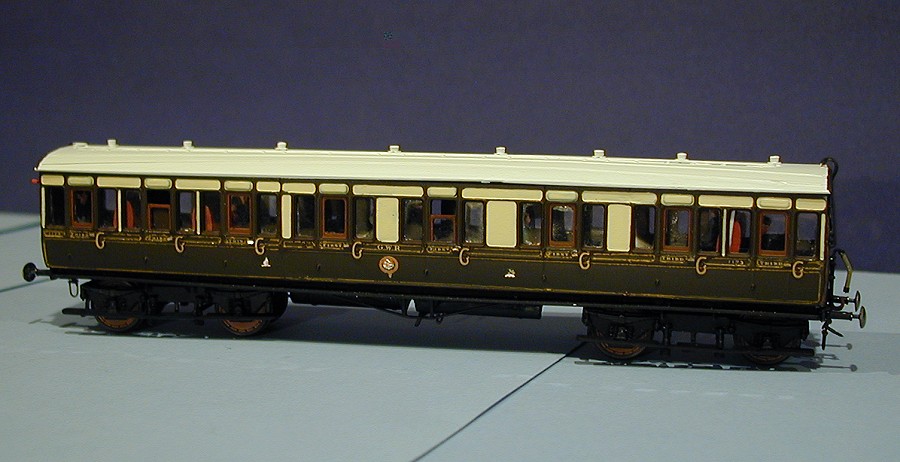
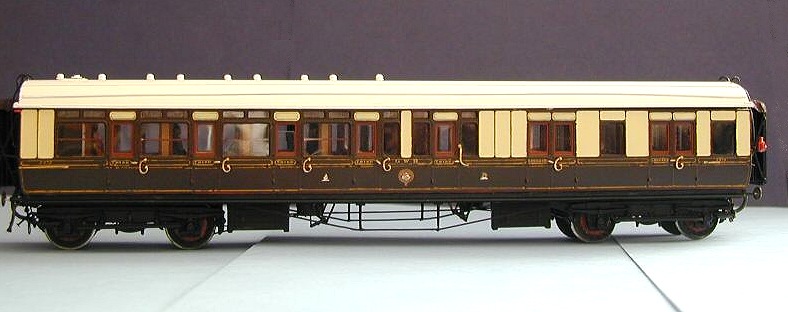
And finally a Toplight Brake 3rd to Diagram D47, built from a Slater's plastic kit.
|